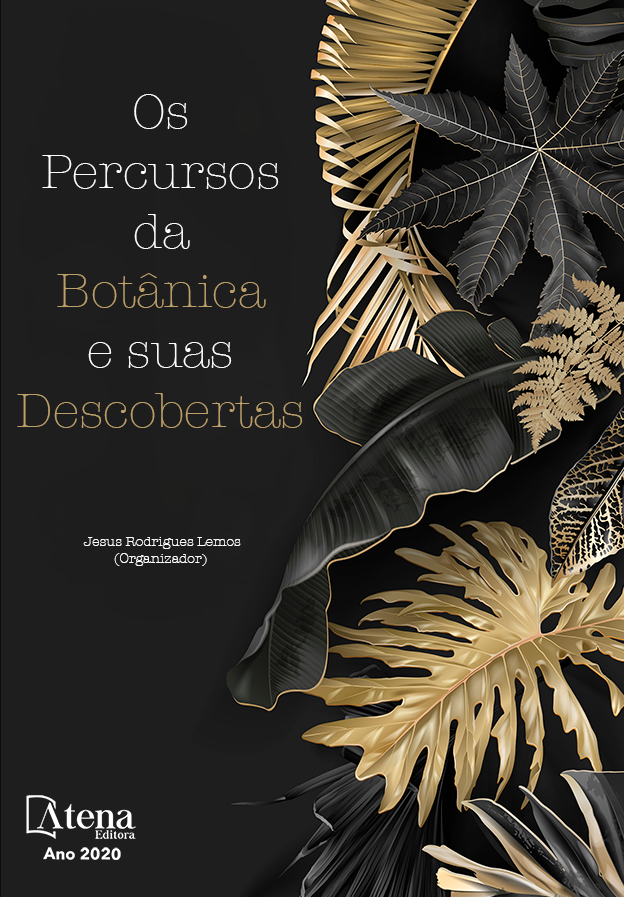
ANÁLISE ANATÔMICA E HISTOQUÍMICA DO JAMBOLÃO (Syzygium cumini L. - MYRTACEAE)
O Brasil contém uma flora rica em espécies medicinais. Em Syzygium cumini L. (Jambolão) são encontradas substâncias fitoquímicas, que atuam na prevenção e no combate do câncer e de doenças cardiovasculares. A pesquisa objetivou caracterizar anatômica e quimicamente a folha do jambolão. Foram realizadas coletas de folhas, que foram fixadas em FAA 70%. Em seguida, foram feitos cortes à mão livre, utilizando-se lâminas de barbear. Os cortes epidérmicos foram corados com Safranina 1% e Azul de Astra 1%. Para os testes histoquímicos, os cortes foram corados com Lugol e Cloreto Férrico para a identificação de amido e compostos fenólicos, respectivamente. Após reação dos cortes anatômicos com os corantes foram realizadas fotomicrografias destes. As folhas apresentaram características padrões do grupo, assinalando-se a ocorrência de cutícula espessa, epiderme bisseriada, presença de drusas, grande quantidade de cristais prismáticos e mesofilo dorsiventral. No mesofilo dorsiventral verificou-se a presença de parênquima lacunoso distribuído em sete camadas de células irregulares e de parênquima paliçádico biestratificado. Ao estudar a folha longitudinalmente evidenciou-se a existência de estômatos do tipo paracítico. Foi identificada a presença de cavidade secretora na região do mesofilo foliar. Destacam-se características importantes de S. cumini, como rede vascular densa; altíssima densidade estomática; folha hipoestomática e ausência de tricomas. O padrão de deposição da cutícula, diferente entre as duas faces da folha, pode ser característico da espécie, sendo observada na face adaxial, maior espessura da cutícula do que na face abaxial. Quanto aos testes histoquímicos foi verificada a presença tanto de amido como de compostos fenólicos nas amostras foliares do Jambolão. Portanto, a descrição anatômica do Jambolão corresponde aos diversos caracteres conhecidos da Família Myrtaceae.
ANÁLISE ANATÔMICA E HISTOQUÍMICA DO JAMBOLÃO (Syzygium cumini L. - MYRTACEAE)
-
DOI: 10.22533/at.ed.6992004103
-
Palavras-chave: Anatomia Vegetal, Botânica, Plantas Medicinais
-
Keywords: Plant Anatomy, Botany, Medicinal plants
-
Abstract:
Brazil contains a rich flora in medicinal species. In Syzygium cumini L. (Jambolão) are found phytochemicals, which act in preventing and combating cancer and cardiovascular diseases. The research aimed to characterize anatomically and chemically the leaf of the jambolão. Leaf collections were performed, which were fixed at 70% FAA. Then, freehand cuts were made using razor blades. Epidermal sections were stained with Safranin 1% and Astra Blue 1%. For histochemical tests, the sections were stained with Lugol and Ferric Chloride to identify starch and phenolic compounds, respectively. After the reaction of the anatomical cuts with the dyes, photomicrographs were performed. The leaves showed standard characteristics of the group, noting the occurrence of a thick cuticle, bisexual epidermis, the presence of druses, a large amount of prismatic crystals and dorsiventral mesophyll. In the dorsiventral mesophyll, a lacunous parenchyma distributed in seven layers of irregular cells and a biestratified palisade parenchyma were found. When studying the leaf longitudinally, the existence of stomata of the paracitic type was evidenced. The presence of secretory cavity in the leaf mesophyll region was identified. Important characteristics of S. cumini stand out, such as dense vascular network; very high stomatal density; hypoestomatic leaf and absence of trichomes. The cuticle deposition pattern, which is different between the two sides of the leaf, may be characteristic of the species, with greater thickness of the cuticle being observed on the adaxial face than on the abaxial face. As for histochemical tests, the presence of both starch and phenolic compounds was verified in the leaf samples of jambolão. Therefore, the anatomical description of Jambolão corresponds to the several known characters of the Myrtaceae Family.
-
Número de páginas: 11
- Delmo Guilherme Mosca Neto
- Bruna Carmo Rehem


